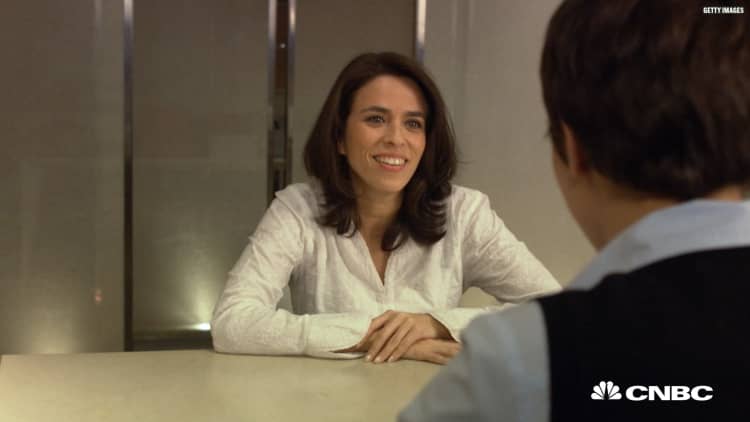The benefits of making eye contact when speaking to people in the workplace are well established, but trying to gauge the right level in a job interview can add to an already nerve-wracking situation.
Presentation coach Graham Davies told CNBC that there is actually "quite a thin borderline between the level of contact that comes across as 'professionally successful' and that which feels almost like 'sinister stalking,'" especially during high-pressured situations like job interviews.
Davies said holding eye contact between 85% to 90% of the time in a job interview was the "happy medium" on what he called a "contact continuum" — the spectrum which runs from zero to unbroken eye contact.
Meanwhile, Noah Zandan, CEO of communication skills improvement platform Quantified Communications, said optimum eye contact should be somewhere in the 60% to 70% range. That means making "more eye contact than feels natural," given that adults only tend to look directly at each other between 30% and 60% of the time.
In a job interview, Zandan said this level of eye contact would help to create a connection with the interviewer, establishing a sense of "authenticity and trustworthiness." This was thought to be important because of the common assumption that someone looked away when they lied, as people tended to look for non-verbal cues of dishonesty.
Zandan also recommended no more than 10-second "bursts," given that longer than this can become "pretty unnerving," while a quick glance could suggest a lack of interest in the conversation.
Active listening
However, Zandan highlighted there is a difference between looking away while listening and glancing to the side, usually to their left, when thinking of a response.
"So, you want to make an authentic connection, you want to feel that connection but then you also want to give that connection a pause," he said.
Likewise, Presentation coach Davies said breaking contact to think of a response to a question was welcome in a job interview, as the "silent thinking stare" can be quite "disturbing" for the recipient.
To be sure, Davis said this risked leaving the interviewer with a negative impression if they feel "stalked" by eye contact.
Zandan added that eye contact also demonstrated "active listening" in a job interview, showing someone is "present" and "engaged" with what the interviewer was saying.
— CNBC's Ruth Umoh contributed to this report.



